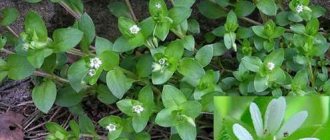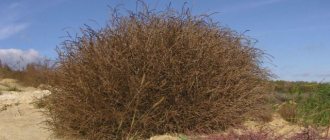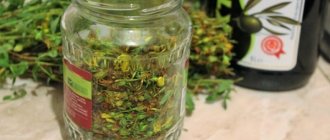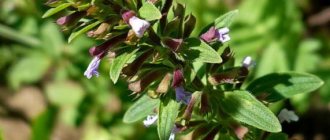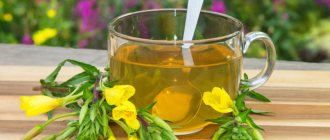Chamomile or medicinal chamomile is a ubiquitous annual of the genus Matricaria of the Asteraceae family. The plant can be found on various soils in Eurasia and North America and other extratropical regions of the earth. From Latin the name is translated as Uterine Herb, since previously it was used mainly to treat female diseases.
The once wild plant is now actively cultivated by humans, providing medicinal value and being a sought-after medicinal raw material. In addition to the active component of many medicines, it is part of shampoos, creams, lotions, soaps and other cosmetics.
Chamomile: description of the plant
The herbaceous plant has an average height of 20-40 cm; a large stem length indicates a lack of sunlight during the growth period. The stem is thin and erect, hollow inside. The leaves are 2-5 cm long and have an alternate arrangement, sitting on the stem. The narrow-linear leaf has typical dissections with pointed lobes. The root is taproot, practically unbranched, thin. Small flower baskets have white petals on the edge and yellow tubular flowers in the middle.
Distinctive features of chamomile from its other types
The petals on the flower basket of chamomile are horizontal or drooping down. The receptacle itself has a characteristic conical convex shape. The head of the flower is hollow.
Plants very similar in appearance to chamomile
Most often, the following types of plants from the Asteraceae family are confused with chamomile:
- Tripleurospermum inodorum; in Latin, Tripleurospermum inodorum;
- Roman chamomile, also known as English chamomile, also known as chamomile, Chamaemelum nobile;
- Dog's navel, or dog's chamomile, or stinking chamomile, in Latin Anthemis cotula;
- Field navel, also known as field chamomile, Anthemis arvensis;
- Russian navel, also known as Russian chamomile, Anthemis ruthenica;
- Common cornflower, Leucanthemum vulgare;
- Pyrethrum corymbosum.
Pyrethrum corymbose inflorescences
All these species have specific features that allow them to be distinguished from chamomile. Let's take a closer look at them...
Chemical composition of chamomile
Chamomile flowers:
- coumarins (herniorin and umbelliferone);
- derivatives of bioflavonoids apigenin, luteolin and quercetin;
- polyine compounds;
- unbound organic acids (caprylic, anthemisic, isovaleric, salicylic);
- phytosterols;
- polysaccharides;
- vitamins (C, nicotinic acid);
- carotene;
- proteins, tannins.
- gum, mucus, bitterness.
Dry baskets contain up to 1% (0.1-0.8%) essential oil, which is called chamomile. The oil is blue in color and characterized by a rich composition. The most valuable component is azulene chamazulene, the content of which ranges from 1-9%. Chamazulene is synthesized from the lactones matricin and matricarin during the process of steam distillation of raw materials. It has pronounced anti-allergenic, anti-inflammatory and bacteriostatic activity.
Up to 50% of the composition are other sesquiterpenoids: farnesene, bisabolol, monoterpene myrcene, etc.
Medicinal properties of chamomile
The great scientists of antiquity actively used chamomile in their recipes. Thus, Dioscorides and Hippocrates used the plant to relieve pain and cramps. Pliny the Elder advised its use as an antidote for snake bites (all parts of the plant), and the decoction as an effective diuretic. Avicenna used the plant as a tonic that restores strength. Today, infusions and decoctions from dried chamomile flower baskets, as well as the essential oil of the plant, are used in medicine.
Beneficial properties of chamomile flowers:
| Healing properties of chamomile oil:
|
A study conducted at the University of Nottingham Medical School found that chamomile relaxes blood vessels and smooth muscles in internal organs. These properties were confirmed in a study by Eulji University, located in South Korea.
A study was conducted at the University of Pennsylvania Medical School that confirmed the pronounced antidepressant and anti-anxiety properties of the plant. In other experiments, it was found that the aboveground part of the plant (including the stem and leaves) has radioprotective properties.
The University of Texas Medical School at Galveston has experimentally proven that regular consumption of chamomile tea reduces the risk of death in people over 65 years of age.
Useful Features
The benefits of chamomile are evidenced by the presence of essential oil, ascorbic and nicotinic acid in its composition. Contains polysaccharides, tannins, flavonoids. Calcium, potassium, and magnesium salts were detected.
There are bitterness, phosphorus, sulfur, glycosides. Medicinal properties:
- antispasmodic;
- anti-inflammatory;
- hemostatic;
- expectorants;
- tonic;
- painkillers;
- regenerating;
- choleretic.
Recipes based on chamomile root are recommended for flatulence. They treat pathologies of the genitourinary system, nervous disorders, and mastitis. Helps get rid of allergic rashes, helps with diseases of the digestive system.
Chamomile root helps reduce pain and quickly stop bleeding. Eliminates inflammatory foci, spasms, has a strong disinfectant effect.
The extensive healing properties of this raw material are used to accelerate the treatment of infectious lesions localized on the mucous membranes of the mouth and nose. It is used for diseases of the throat and eyes.
Chamomile root is beneficial for gallbladder pathologies. It is valued in folk treatment for its ability to regulate the menstrual cycle and have a beneficial effect when gynecological problems arise.
Normalizes temperature, effectively fights parasites, and promotes the removal of stones from the bladder. Strengthens the nervous system, eliminates unmotivated anxiety, improves memory, and activates brain activity.
It is an effective herbal raw material for organizing preventive measures against seasonal colds and infectious diseases.
Homemade ointments, the basic component of which is this medicinal variety, accelerate the healing of festering wounds, boils, and ulcers. Intensify the regeneration of affected skin.
Article for you:
Medicinal properties of angelica roots and use in folk medicine
Due to its anti-inflammatory properties, chamomile rhizome is used in home cosmetology.
Masks and lotions based on this raw material remove peeling, redness, and rashes from the skin. Recommended for dry, sensitive skin.
Indications for the use of chamomile preparations, including oil
- Skin diseases of an inflammatory nature, including purulent wounds, burns;
- Gallbladder diseases;
- Pathologies of the respiratory system, accompanied by cough, swelling of the mucous membranes of the respiratory tract, bronchospasm;
- Chronic and acute diseases of the stomach, resulting in inflammatory changes in the mucous membrane (gastritis and other gastropathy);
- Inflammatory processes of internal organs, including the genitourinary system;
- Inflammatory diseases of the mucous membranes;
- Bronchial asthma, allergic gastritis, eczema and other diseases associated with individual hypersensitivity reactions;
- Pain syndrome, including migraine and toothache;
- Damage to connective tissue (sprains);
- Insomnia.
A long treatment period of up to 3 months is allowed: as a rule, addiction and allergic reactions do not develop.
Uses of chamomile
The medicinal plant chamomile has the following effects on the human body:
- Strengthens the immune system. Regular addition of herbs when preparing tea reduces the risk of developing acute respiratory viral infections (influenza, ARVI).
- Anti-inflammatory effect. This is achieved thanks to the content of biologically active substances.
- Antiseptic. The use of a decoction or infusion helps suppress the proliferation of pathogenic microbes (viruses, bacteria, fungi).
- Hemostatic (hemostatic). The flower baskets of the plant have this property.
- Anticonvulsant (anticonvulsant).
- Calming (sedative).
- Hypnotic. The essential oils contained in chamomile improve night's sleep.
- Mild pain reliever.
- Gastroprotective (protects the walls of the stomach from the effects of aggressive factors).
- Weak astringent. When chamomile enters the stomach, a protective film is created that protects the mucous membrane from gastric juice and reduces the risk of developing gastritis.
- Choleretic. Bile is produced in the liver and is released in portions from the gallbladder into the lumen of the duodenum. The plant improves the excretion of bile and normalizes digestion.
- Sweatshop. The plant enhances the function of the sweat glands and the removal of toxins from the body through sweating.
- Antispasmodic. Using chamomile in the form of tea reduces the severity of pain due to spasm of smooth muscle organs (uterus, stomach, intestines, gall bladder).
- Carminative. The use of decoctions and infusions based on chamomile reduces the formation of gases in the intestines. This is used for diseases of the digestive system, errors in diet and functional disorders accompanied by severe bloating (flatulence).
- Antiallergic. Chamomile is hypoallergenic. It reduces the symptoms of an allergic reaction (skin rash, hives, itching, redness) by acting as a weak antihistamine.
- Has a beneficial effect on the central nervous system, reducing depression.
- Vasodilator (expands the arteries that supply the brain).
- Promotes healing of wounds, burns and other skin injuries.
- Has a cytostatic (antitumor) effect.
We recommend that you read the Photo and description of Dalmatian chamomile
The following diseases and pathological conditions can be treated with chamomile:
- Gastritis (acute and chronic). This is an inflammatory disease of the stomach, manifested by pain in the epigastric zone after eating and on an empty stomach, bloating, nausea, heartburn (with high acidity). Chamomile reduces the severity of pain. Taken orally after meals.
- Gastroduodenitis (combined inflammation of the stomach and duodenum).
- Gastropathy.
- Duodenitis (inflammatory disease of the duodenum).
- Peptic ulcer disease. Chamomile reduces inflammation of the mucous membrane during the formation of ulcers, protects the defect from the effects of hydrochloric acid, and facilitates the course of the disease.
- Enterocolitis (inflammation of the small and large intestines). Manifested by abdominal pain, defecation disorders (constipation, diarrhea and their alternation), flatulence, weight loss and asthenovegetative syndrome. Chamomile can be drunk for chronic inflammation and enterocolitis against the background of acute intestinal infections. The plant weakens spasm of intestinal smooth muscles, thereby reducing pain.
- Haemorrhoids. The plant strengthens blood vessels, helps stop rectal bleeding and reduces pain during and after bowel movements.
- Diseases of the gallbladder and bile ducts (cholecystitis, cholangitis). With these pathologies, stagnation of bile is often observed. Chamomile has a choleretic effect, reducing the risk of gallstone formation.
- Respiratory disorders (cough) due to bronchospasm and swelling of the respiratory tract. Due to its anti-inflammatory and anti-allergic effects, chamomile reduces tissue swelling, making breathing easier.
- Acute respiratory viral infections (influenza, parainfluenza, adenovirus and rhinovirus infections).
- Systemic diseases characterized by damage to connective tissue (lupus erythematosus, dermatomyositis, scleroderma, rheumatoid arthritis, rheumatism).
- Toothache.
- Inflammatory diseases of the oral cavity, including gingivitis, glossitis and stomatitis.
- Toothache.
- Convulsive syndrome.
- Sleep disturbance (frequent awakenings, prolonged falling asleep, nightmares).
- Migraine. Chamomile reduces the intensity of headaches and the frequency of attacks.
- Intoxication and poisoning.
- Burkitt's lymphoma (non-Hodgkin's lymphoma). With this pathology, chamomile acts on lymphoblastic cells, normalizes the processes of cell division and reproduction. The plant is used as a traditional medicine and is not the main method of treatment. The above-ground part of the plant is mainly used.
- Pulmonary edema. Chamomile protects cells and vascular membranes.
- Menstrual irregularities.
- Premenstrual syndrome with severe spasmodic pain.
- Inflammatory diseases of the genitourinary organs (urethritis, cystitis, pyelonephritis, vaginitis, prostatitis, vesiculitis). Chamomile acts as a uroantiseptic, inhibiting the growth of microbes (Escherichia coli, cocci, chlamydia, fungi).
- Benign prostatic hyperplasia. Chamomile, used in combination with other herbs, reduces swelling and size of the prostate, which makes urination easier.
- Dysbacteriosis.
- Pathology of the ENT organs (sinusitis, otitis media, pharyngitis, inflammation of the tonsils).
- Skin diseases of a fungal nature (dermatomycosis) and others (eczema, seborrhea of the head, hyperkeratosis).
- Increased irritability.
- Allergic diseases (bronchial asthma).
- Nervous tics.
- Depression.
- Heatstroke. Chamomile is used externally in the form of lotions.
- Sprain.
- Exudative diathesis. Chamomile is used in the form of an essence.
- Malaria (as a traditional medicine).
- External tuberculosis (skin, mucous membranes).
- Ophthalmological diseases.
We recommend that you read Turmeric and Diabetes
The use of chamomile and its dosage forms
Treatment with chamomile (internal use) helps with:
- Diseases of the gastrointestinal tract (gastritis, enteritis, colitis) and biliary tract, liver pathologies, stomach cramps, diarrhea and increased flatulence;
- Inflammatory phenomena, including diseases of the bronchopulmonary system, ENT organs;
- Increased body temperature;
- Uterine bleeding, postpartum metrorrhagia;
- Painful periods;
- Scrofula, malaria;
- ARVI;
- Overwork;
- Decreased appetite;
- Insomnia, increased excitability.
The infusion is also used for external use for:
- Sore throat, gum inflammation, gingivitis, periodontal disease, stomatitis, toothache (for rinsing);
- Ulcers, abscesses, eczema, difficult-to-heal wounds, rashes, weeping, burns and frostbite (for lotions and compresses);
- Hemorrhoids (in the form of microenemas);
- Inflammation of the eye mucosa (for washing);
- Sweaty feet and hands (for wiping);
- Rheumatism, gout, bruises, arthritis (for poultices);
- Rosacea, pimples (for washing, wiping);
Decoction and infusion
- Chamomile decoction - flowers in the amount of 4 tbsp. place in an enamel pan and add 300 ml of boiling water. Place in a water bath for half an hour, then cool and strain, squeezing out the remaining raw materials. Take half a glass 2-3 times a day after meals, preferably with the addition of honey.
- Infusion - flowers in the amount of 4 tbsp. pour into a thermos, add 200 ml of boiling water, seal and leave for 3 hours. Take the strained infusion 3-4 times a day in equal parts.
The decoction and infusion can be stored for no more than 2 days in the refrigerator.
Chamomile tea
- Tea with a calming and carminative effect: take 3 parts chamomile (flowers), 5 parts cumin (seeds) and 2 parts valerian (roots), mix. Pour two tablespoons of this mixture into 2 tbsp. boiling water, leave for about 20 minutes, strain. Take 100 ml morning and evening.
- Tea for weight loss - take 1 tsp per 200 ml of boiling water. dried flowers and leave for 10 minutes. During the day you should drink up to 5 cups of 200 ml. Course – 2 weeks, no more!
Baths
500 grams of raw material (the entire above-ground part) is poured with 2 liters of water and boiled for about 10 minutes, filtered and the broth is poured into the bath. Take every other day for 2 weeks in a row for 30 minutes. Useful for the following conditions:
- Skin diseases, wounds, ulcers;
- Insomnia, nervousness;
- Cramps of the calf muscles;
- Dry skin, peeling skin;
- Liver diseases;
- Cracked heels;
- Tired legs;
- After X-ray irradiation.
Cream
Take 50 grams of butter (low fat content 60-65%) and 3 tablespoons of vegetable oil, melt everything in a water bath, add 2 yolks, 1 tsp. glycerin, 30 ml camphor alcohol, 2 tbsp. honey, 50 ml chamomile infusion. Mix everything thoroughly and pour into a glass jar. The cream can be stored in the refrigerator for up to 6 months. Effective for:
- Dry skin;
- Skin laxity and decreased turgor;
- Cracks in the skin, peeling;
- Irritations;
- Redness of the skin.
Douching
1 tsp dried flowers are poured with boiling water in a volume of 200 ml, covered with a lid and left for half an hour, filtered. Draw the solution into a syringe and gently perform vaginal douching over the bath every night for a course of 6-8 days. The fluid is administered very slowly.
Shown for:
- Inflammatory processes without exacerbation;
- Thrush;
- Cystitis;
- Nonspecific and specific vaginosis;
- Cervical erosions.
Douching is contraindicated:
- Women over 40 years old (women in this age group experience a natural decrease in the moisture of their mucous membranes, and chamomile can cause even greater dryness and irritation);
- During pregnancy;
- During menstruation;
- For acute inflammatory diseases;
- In the first month after childbirth, termination of pregnancy, gynecological operations.
Tampons
Chamomile tampons are indicated for the treatment of cervical erosion. Before preparing the infusion, cut off the aloe leaves and put them in the refrigerator for 2 days. Take 20 grams of flowers, pour 1 liter of water over them and leave in a thermos for 1 day; strain the finished infusion. Grind the aloe leaves to the consistency of porridge, mix them with the prepared infusion in equal proportions. A sanitary tampon is dipped in the solution and placed in the vagina overnight. Repeat daily for 10 days in a row. Contraindications are the same as for douching.
Treatment recipes
Analyzing folk recipes based on the use of chamomile at home, it can be noted that the inflorescences of this amazing plant are mainly used.
However, for some diseases, the root is used, in which characteristic beneficial compounds and substances are concentrated.
Cancer
The preparation of the most effective remedy to combat malignant tumors of the uterus in the initial stages of the disease is often based on the use of chamomile roots.
You will need small fragments of high-quality dried raw materials. They should be placed in an enamel bowl. Brew with steep powder, maintaining a volume ratio of 1:10.
The cooled healing liquid is filtered using a two-layer gauze filter. A quarter glass of infusion should be consumed every eight hours.
You can make an equally effective healing drink at home using dried chamomile flower baskets. They are pre-ground.
Measure out 1.5 tbsp. l. raw materials, pour into an earthenware glass and steam with boiling water - 300 ml. After cooling, the infusion is squeezed out using a two-layer gauze flap. Drink 100 ml after breakfast, lunch, and dinner.
If therapeutic measures are aimed at treating uterine cancer, then a similar chamomile infusion is additionally used for nightly douching.
Cystitis
Combine dried crushed roots and chamomile flower caps in equal quantities. Transfer 2 tsp into a ceramic or enamel bowl. prepared mixture. Steam 500 ml of boiled water.
Keep the infusion under a canvas napkin until it cools. For straining, use two-layer gauze. Drink 100 ml before each meal. Similar treatment is also recommended for the development of pyelonephritis.
To enhance potency
A homemade wine tincture, the dominant component of which is crushed dried chamomile root, allows you to strengthen male power, activate metabolic processes, and increase immunity.
Article for you:
Medicinal properties of comfrey root, preparation and use in folk medicine
The drink is prepared in accordance with the general recommendations of traditional healers, using 8 g of raw materials. Pour it into a bottle with a liter of dry wine. When sealed, keep in the dark for a week.
Carefully filter the healing wine tincture into small bottles, which are hermetically sealed and kept cool. You should drink 50 ml of stimulating liquid before intimacy. You can dissolve a little honey in the drink to enhance the effect.
Use of chamomile for cosmetic purposes
- To get rid of freckles (face whitening), take 20 grams of dried chamomile flowers, pour half a liter of boiling water, leave and strain, add half a liter of curdled milk and the juice of two lemons, stir. Make napkins from gauze the size corresponding to the area of freckles on the face, soak them in the solution and place on the skin for 1 hour. The remaining product is washed off with cool water and the face is lubricated with a rich cream. Make such masks 3 times a week.
- To eliminate redness and irritation of facial skin. 1 tbsp. dry inflorescences of the plant, pour a glass of boiling water, leave for about 1 hour, strain, add 1 tbsp. honey, mix. Soak gauze wipes in the solution and apply to problem areas of the skin, changing the wipes as they dry for half an hour.
- Recipe for chamomile for the treatment of acne: take 2 tbsp. dried chamomile flowers and 1 tbsp. dry celandine herbs, pour 1 liter of boiling water over everything, cover with a lid and leave for 12 hours. Wipe the affected skin with the resulting solution at least 5 times a day until the acne disappears.
- Chamomile for hair that is dry and brittle. 4 tbsp Mix the flowers with 0.5 liters of boiling water and leave for half an hour, strain. Mix with egg yolk and apply the resulting solution over the entire length of the hair, leave for half an hour, then rinse thoroughly. Repeat twice or thrice a week for 1 month.
This solution has a beneficial side effect for blondes - it lightens the hair and gives it a golden shine.
How to make chamomile tea
After a hard day at work, chamomile tea will help relieve stress. After tea, sleep becomes deep and complete, spontaneous awakenings disappear. Tea has a weak analgesic effect; it can be used to rinse the mouth for stomatitis.
Classic chamomile tea recipe
2 tsp. dried dried chamomile flowers need to be brewed with 200 ml of boiling water. Leave the tea covered for 20-30 minutes and filter.
You may be interested in: Ginger with milk will strengthen the immune system and relieve coughs
Chamomile tea with lemon balm or mint
Chamomile flowers and mint or lemon balm leaves should be taken in equal parts. 1 tsp. pour a glass of boiling water. Insist for half an hour. This tea is used as a sedative. Can be used for colds and problems with the respiratory system.
Chamomile oil
Aromatherapy
Without having a pungent or exotic odor, chamomile oil is well tolerated by patients, including children and the elderly, has a positive effect on all organs and systems and disinfects indoor air. Meanwhile, you need to get used to it - not everyone likes the taste of bitterness. Add a few drops to the aroma lamp and conduct a 15-20-minute session, preferably in the evening.
Internal use
Take in a mixture with honey: 2 drops of oil per 1 tsp. honey twice a day for 5-7 days. Helps with reduced immunity, decreased appetite, ulcers and gastritis (not exacerbation), menstrual irregularities and menopause. Eliminates irritability, anxiety, stabilizes the emotional background. Activates memory, has a positive effect on mental activity.
Pregnant, lactating women and children under 6 years of age are prohibited from using its oil internally.
Outdoor use
Chamomile essential oil can be applied to the skin in its pure form, without dilution, but precisely to problem areas by applying a cotton pad soaked in oil to the skin for 5-10 minutes when:
- diseases of an allergic nature (eczema, dermatitis);
- inflammation after exposure to the sun or thermal burns (at the healing stage);
- insect bites;
- poorly healing wounds, ulcers;
- acne;
- acne;
- fine wrinkles;
- rosacea;
- ingrown toenail (at the stage of tissue healing after surgical treatment).
- alopecia, dandruff (in this case, the oil is rubbed into the hair roots for half an hour, then washed off).
Apply chamomile oil for 7-10 days in a row.
- Essential oil can be used to enrich any cosmetic products - creams, lotions at the rate of 3 drops of oil per 5 ml of product.
- Use the oil as a massage oil mixed with a base oil (for example, 5 drops of chamomile oil per 10 ml of olive oil).
- To aromatize baths, 10 drops, previously diluted in a base (warm milk, honey), are enough.
- It combines well with other essential oils, enhancing the effectiveness of the latter: bergamot, geranium, bitter orange, cypress, lavender, rose, sage, marjoram.
Methods of administration
The following products based on this plant are used:
- Tea. It is made from ready-made powder in filter bags, dried or fresh plant flowers. The finished powder consists of flowers and can be bought at a pharmacy. To prepare tea you need to pour 1 bag or 1 tsp. plants with boiling water or hot water, cover and let steep for 15-20 minutes. If necessary, filter the solution. It is recommended to drink tea after meals. It is not recommended to consume more than 4 cups per day. Tea is used internally for systemic pathology, topically (in gynecology, ENT practice, dentistry, urological practice) or externally (for skin diseases).
- Decoction. Its difference from tea and infusion is that the resulting mixture is brought to a boil and kept on fire (steam bath) for 15 minutes. Place 1 tbsp in a container. plants, add 1 cup of boiling water and place on the stove. Then the broth is filtered and cooled. It should be stored in the refrigerator for no more than 24 hours. It is recommended to drink it fresh. If the decoction is stored for a long time, the medicinal properties may disappear. Drink the decoction 3 times a day before meals.
- Infusion for oral administration. To prepare it you will need 1 tbsp. plants (leaves) and 1 cup boiling water. The resulting mixture is infused for 2 hours. Drink the infusion 1/4 cup (50 ml) 3 times a day.
- Infusion for external use in cosmetology. To obtain it you need to pour 4 tbsp. plants with 1 cup of boiling water and let steep for 1 hour. The cooled solution is used to treat the skin of the face and other parts of the body.
- Cold infusion. To obtain it you will need 5 tbsp. chamomile flowers and 0.5 liters of cold water. The solution is infused for 8 hours, filtered and stored in the refrigerator. Use externally.
- Alcohol tincture. 1 tbsp. plants are mixed with 10 tbsp. vodka and leave for 10 days in a dark place. Drink 20 drops of tincture after meals with water. Do not take alcohol tincture on an empty stomach.
- A mixture based on vegetable oil and chamomile. This is an excellent skin care product. The oil can be taken orally, 15 drops before meals, added to tea or taken with honey.
- Mixture for inhalation. The resulting solution must be homogeneous and free of suspended substances.
- Decoction or infusion for douching. Used for vaginitis and cervicitis.
- Decoction for instillation into the urethra.
- Decoction for medicinal baths. To prepare it, 500 g of dry plant is poured into 2 liters of hot water and boiled for 10 minutes. The broth is cooled and filtered. The resulting mixture is added to the bath, which is taken for 2 weeks for half an hour. This treatment is effective for rashes, skin diseases and neuroses.
- Solution for microenemas. Helps with bloating, anal fissures, hemorrhoids, ulcerative proctitis and other diseases of the rectum.
- Chamomile oil. Obtained by pressing. It is used in aromatherapy for sleep disorders, migraines, asthma and irritability.
We recommend that you read the Description of bean growth
Chamomile for children
Children can be given chamomile tea starting from 1 year old, diluting it in half with boiled water or buying special children's chamomile teas, which take into account age standards. For external use, this plant (with the exception of oil) can be used for up to a year, also reducing the concentration of the finished infusion by 2 times.
Some sources recommend chamomile infusion from age zero for colic and abdominal pain. You should consult your pediatrician about the possibility of such treatment.
Preparation and storage
Medicinal raw materials for internal use are chamomile flowers. They are harvested in dry weather from June to August. It is during this period that the highest concentration of essential oil in the plant is observed.
For external use, chamomile is harvested whole, collected at the same time as the flowers. The raw materials are dried in the shade, ensuring good ventilation of the room. If a dryer is used, the maximum air temperature should be 40 C. During drying, do not turn the raw materials over so that the petals from the flowers do not fall off.
Dried raw materials can be used for 1 year, provided they are stored in clothes or paper bags in a dark and dry place. The plant has a rather strong specific odor, so you should not store raw materials next to products that absorb odors.
Differences from Russian chamomile
This species is quite easy to recognize by its flat receptacle: the middle of the inflorescence with yellow flowers is not convex, like that of the chamomile. This can be clearly seen in the photo:
For comparison, here is a photo of a chamomile inflorescence:
Russian chamomile also has thicker and wider leaves, which is also a good distinguishing feature.
And, finally, it also does not have an empty cavity in the receptacle.
Release forms
Chamomile is included in many dietary supplements and herbal medicines and is available in the form of:
- Dry raw materials (dried inflorescences, tea, herbal mixtures);
- Liquid extract or tincture;
- Fat capsules with plant extract;
- Chamomile oil;
- Creams and ointments contain chamomile extract.
| Chamomile filter sachets | Chamomile flowers | Romazulin - liquid extract of chamomile | Chamomile oil extract |
Author:
Sabuk Tatyana Leonidovna hygienist, epidemiologist
Possible contraindications
Although the plant has many beneficial properties, there is a list of contraindications for the use of chamomile and herbal remedies. Therefore, before use, consult a doctor.
During pregnancy and breastfeeding, herbal infusions should be taken with caution as they increase estrogen levels. Hormonal imbalance can lead to premature birth or other consequences.
It is recommended to exclude chamomile from the medicine cabinet for a period of one month after gynecological operations, childbirth, exacerbations of inflammation of the mucous membranes and after 40 years, when natural hydration is less and treatment can lead to dryness of the uterine lining.
We recommend that you read How and where pineapples grow (photos and pictures)
Acute cardiac or renal failure also excludes the possibility of taking drugs with the extract or raw material.
The use of other medications is also taken into account, since only a doctor can determine their compatibility with herbal therapy.
In the presence of a chronic disease or due to intolerance, the risk of bleeding, bronchospasm, vomiting, arterial hypertension and Quincke's edema increases. Ointments, creams, and shampoos can cause hives, rashes, and itching.
Despite the fact that among medicinal plants, chamomile is famous for its cosmetic medicinal properties, such a contraindication occurs if there is an individual intolerance to one of the substances that make up the herb.
Another contraindication for taking an infusion of this plant is increased stomach acidity.
